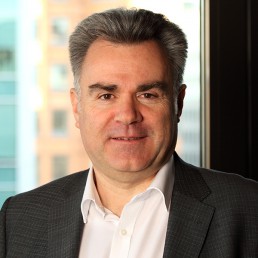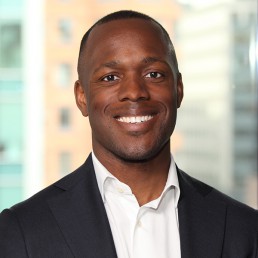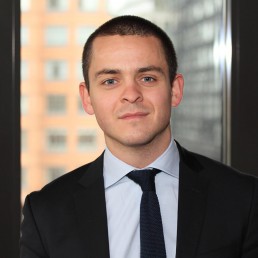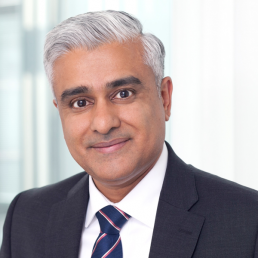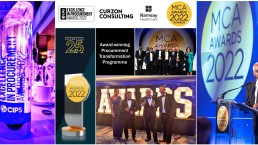UK’s Leading Management Consultants 2021
Ranked in the Top 20 of the UK’s consulting firms, we are delighted to have been recognised for the third consecutive year as one of the ‘UK’s Leading Management Consultants 2021’ by the Financial Times.
Recommended in seven categories compiled with data company Statista, the annual rating is based on endorsements by clients and peers and demonstrates our steady consistent year on year sector & service line growth.
Consulting companies are awarded Bronze (recommended), Silver (frequently recommended) or Gold (very frequently recommended).
Sectoral expertise
- Construction & Infrastructure – Silver
- Financial Services – Bronze
- Healthcare – Bronze
- Public & Social Sector – Bronze
Consulting services
- Digital Transformation – Bronze
- Operations & Supply Chain – Bronze
- Strategy – Silver
Managing Partner Andrew Morgan said
We are thrilled to see the continued progression of the firm, competing alongside some major consulting brands. I am really proud of the team and this reinforces their dedication to deliver tangible results for our clients in a range of markets through strategic, operational and transformational delivery.
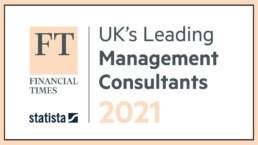
CONTACT US TO FIND OUT HOW WE CAN HELP
Infrastructure after Covid-19 – when the mould is broken where do you want to be?
Competition or collaboration? Navigating change in infrastructure after Covid-19
The Covid-19 pandemic has brought about rapid unprecedented change. Companies have responded to imposed restrictions, people have adapted to new ways of working, and the impact on the economy, employment and productivity has been immense.
Businesses face an ever-shifting timescale for recovery but uncertainty on how they need to adapt in the short, medium and longer term.
A commitment to investment in infrastructure
With uncertainty over the shape of economic recovery, the UK government is under increasing pressure to provide answers. The current political agenda is balancing the risk of further outbreaks against the need to kick-start the economy and get people back to work. Infrastructure is a key part of this recovery plan.
As such, we are seeing a range of statements, commitments and emerging policies that::
- Commit to accelerated investment in infrastructure
- Criticise past failings in the delivery of major programmes which have taken too long and cost too much
- Question how other countries can do it so much better than us
- Recognise that we have developed a huge burden of bureaucratic processes
- Challenge the slow adoption of new technologies and innovation
- Reinforce previous goals on climate change and the environment
What does this mean for core infrastructure and regulated industries?
The services and facilities provided by infrastructure and regulated industries are essential to the future growth of the economy. The challenge is how to fairly manage the cost of recovery, which will ultimately be passed onto the consumer. This creates further pressure on the whole system including clients and service providers. Some key questions and considerations include:
For Clients (or sponsors)
- With greater pressure on household budgets, customer expectations on service and value will increase
- Customers will be less tolerant of failure and companies will be under greater scrutiny
- Social and environmental conscience is increasing
- As a result of COVID-19 there will be sustained change in the way people work. But is the full impact fully understood?
- Clients or sponsors will be under increased pressure from the regulators to deliver more for less
- Continuing to stretch existing resources and deliver incremental change will not be enough
- Companies will be driven to develop different and more efficient operating models
For Service Providers
- No longer contractors or consultants but “Service Providers”
- Has traditional contracting had its day and does it really deliver what clients and customers are ultimately looking for?
- Service Providers will be under the greatest pressure to address the higher-level challenges through creating new ways of working or new service offerings
- “Necessity is the mother of invention” – the time of greatest need will drive the greatest change and the more agile companies will be those that win
- Traditional contracts delivered in a traditional way will become an increasing “race to the bottom” based on price with associated increase in failure
Innovation and technology inevitably has a major part to play in addressing the above.
What part should Innovation and Technology play?
Regulated industries are notoriously slow adopters. If this is to change, it is essential to understand the reasons why and break these paradigms.
- Risk of failure is too high either in terms of impact on customers or regulatory action
- Procurement processes are cumbersome and often preclude SMEs/Start-ups
- In reality, Intellectual Property has a very short shelf-life, products are quickly copied
- There is more to be gained from running faster and letting others follow compared to standing still and protecting what you have got
With many organisations facing the same challenges, is there something to be learned from collaboration?
Competition or Collaboration?
Regulation has often been based on the premise of driving or simulating competition. So, what delivers the greatest benefit – organisations collaborating or competing? Many “alliance” delivery models are based on the benefits of collaboration which raises a number of questions:
- Regulated utilities by their nature are often monopolies so why isn’t there far greater collaboration and sharing of ideas?
- Technology/Innovation start-ups often have to prove their concepts several times over to separate clients passing through individual tortuous procurement routes. As a result many collapse before they start. As a wider industry why do separate companies re-invent the same wheel
- Contractors/Service Providers provide similar services to different clients and sectors in the same geographic area. Is there more to be gained from a common approach across sectors?
- If the same Service Provider is providing a service across multiple clients and sectors who is the regulator actually regulating – the Client or The Service Provider?
- If the end service across sectors is a similar service why should there be different regulatory models and different regulatory measures or even different regulators?
Acceleration, adaption and adoption
The COVID-19 pandemic has had an undeniable impact on organisations. Businesses have been forced to adopt a more radical and agile approach in how they adapt to change.
This unprecedented challenge has also created opportunities. Many businesses have failed but some have flourished. In the main, these organisations have embraced a culture of learning from others. They have collaborated and openly shared resources. They have undertaken the accelerated development of complex solutions and executed them with simplicity.
Going forward, significant commitments have been made, expectations are high and pressure on delivery will increase. The challenges will necessitate change and those that move fastest stand to gain the most.
The authors
Get in touch
We help infrastructure organisations to meet challenging targets through strategy, operating model design and transformation.
Contact us to discuss how we can help your organisation.
Want to find out more or meet one of our Infrastructure team? Contact us by email, phone or our web form.
Digital productivity management in infrastructure
The full package: digitising productivity management in infrastructure delivery
Infrastructure owners and construction companies are selecting or developing, and then seeking accelerated implementation and scaling of, their preferred digital productivity management tool(s).
In consideration of the current economic climate, the critical role that Infrastructure investment is set to play in boosting growth has been amplified.
In light of these two factors, it does not feel as though there could be a better time to suggest that if we are going to do the whole ‘digital productivity thing’ in infrastructure and construction… we should do it properly. So, what does ‘doing it properly’ mean? It means that it is time to assess the full spectrum of construction-site productivity management capability areas that can be enhanced through the new or improved application of digital tools. We need the full package.
Unlocking greater efficiencies through digital
Digital enablement has revolutionised productivity and the definition of efficiency norms in other industries. Most notably in Manufacturing industries such as Fast-moving consumer goods (FMCG) where market leaders such as Unilever have reduced material factory waste by more than 40% by digitally enabling end-to-end quality management. (Source: World Economic Forum, How manufacturing can thrive in a digital world and lead a sustainable revolution, January 2020)
Similarly, by 2025 the digital enablement of Logistics has the potential to reduce global carbon emissions by 11%. (Source: World Economic Forum, Digital Transformation of Industries Demystifying Digital and Securing $100 Trillion for Society and Industry by 2025, January 2016) A powerful endorsement of advanced productivity management tools.
The Agriculture industry presents further evidence. Here, as an example, data gathering and historical analysis data-driven decision-making tools are having a transformative impact on crop productivity.
Productivity management in infrastructure however is often driven by manual cost and performance benchmarking processes. Some efficiency gains have been achieved through the successful adoption of Lean methodologies. But the meaningful use of digital tools that enable higher productivity rates will be key to unlocking much greater efficiencies in the construction phases of infrastructure programmes.
There is an entire spectrum of construction site productivity management capability areas that can be enhanced through the application of digital tools. These can be broadly placed into three categories:
- Planning and Collaboration: Ensuring the feasibility of planned activities and improving communications between the site and site-office
- Data gathering: Gathering data on the work accomplished on-site to feed performance/progress metrics
- Data-driven analytics: Collecting historical productivity data on-site to feed data-driven decision making
In pursuit of significant improvement
Organisations tend to focus on the independent application of a discrete digital tool to enable productivity. Most often this means dedicating themselves to a data gathering tool for the purpose of productivity tracking. However, in the pursuit of significant efficiencies it is not sufficient to introduce digitally enabled capability to just one area of the productivity management spectrum. For infrastructure delivery, at the construction site level, a suite of digital tools covering the full range of capabilities (outlined at a high level by the three categories above) is required. Many of the more recently developed tools incorporate data as a service (DaaS) offerings but there is the opportunity to go further. Attributes for productivity information gathered, processed and analysed should adhere to the standards set by data and information frameworks being built by infrastructure owners.
For data generated by any suite of tools, there is the opportunity to actively inform cost and performance benchmarks and subsequently productivity norms for the delivery of work. This applies within the integrated environment for information that programmes, alliances or organisation level data frameworks house.
So how to decide on which digital productivity management tools to work with?
Whether through in-house development or accessing solutions already in play, several factors should be considered, including but certainly not limited to:
- Ease of implementation
- Supply chain buy-in
- Scalability across multiple construction disciplines
Prioritisation frameworks can be designed and applied to rapidly assess an entire landscape of digital productivity management solutions, thoroughly reviewing each through the lenses of standard attributes.
Digital productivity done properly
Individual tools applied in isolation in areas such as productivity tracking can offer benefits. But there is an entire spectrum of on-site productivity management capability that can be enhanced through the application of digital tools. These benefits can be amplified through alignment with the principles for data defined by information frameworks being developed by infrastructure owners. Other industries are demonstrating the scale of productivity benefits available through digital enablement. These are most notable where a complete end-to-end process approach is adopted.
So, if we are going to do the whole ‘digital productivity thing’ in infrastructure and construction… we should do it properly.
The authors
How we can help: Rapid Digital Portfolio Prioritisation
Siloed innovation, functional misalignment and data ‘doing its own thing’ are just a few challenging features of the current congested-frontier of digital transformation.
Applying our bespoke prioritisation framework(s), Curzon Consulting takes 4-6 weeks to rapidly assess an organisation’s entire landscape of digital solutions and initiatives. We thoroughly review each through the lenses of attributes that are orientated around features such as financial benefit, scalability and interoperability.
Get in touch to find out how we can help or arrange a free virtual meeting with award-winning Principal consultant, Edem Eno-Amooquaye.
Want to find out more or meet one of our Infrastructure team? Contact us by email, phone or our web form.
The convergence of healthcare and travel
Airports and the wider transportation industry are facing a number of new challenges as they prepare for the realities of a post COVID-19 world.
Aviation and mass transit are dependent on density, the antithesis of social distancing. John Holland-Kaye, CEO, Heathrow Airport recently stated “It’s just physically impossible to socially distance with any volume of passengers in an airport.” He continued “The constraint is not about how many people you can fit on a plane; it will be how many people you can get through an airport safely”.
To address these constraints, many airports are considering how to adapt their existing operating models for the new reality and adhere to any new health and safety regulations.
What could the future of airports look like?
Already many airports, including those based in the UK, have introduced measures to enable essential travel based on government guidelines. Those guidelines include social distancing, ample distribution of hand sanitiser throughout airports and efforts to spread passengers evenly across terminals.
However, such measures may not be as easily implemented when capacity is ramped up towards pre COVID- 19 levels and therefore innovative and creative methods will be needed to help increase passenger confidence and change the narrative. Passenger confidence will be the key driver to getting back to some level of normality!
Accelerated automation across the customer journey
The passenger journey is changing. Post COVID-19, passengers may welcome the acceleration of automation across commercial aviation and urban mobility in order to limit physical contact.
A new era of automation is likely to extend from the basic such as the eradication of all remaining doors requiring pushing or pulling to the more advanced. These might include gesture or eye-movement-based interactions with payment kiosks and in-flight entertainment screens; robots and drones equipped with UV lights that continuously sanitize surfaces; and artificial intelligences that govern our previously clumsy attempts at everything from bus scheduling and curb usage to security screening and aircraft boarding.
We spoke with one passenger experience company, Elenium Automation, who are trialling ‘touchless travel’ technology. Etihad Airways recently announced that it plans to partner with Elenium Automation to trial new technology which allows self-service devices at airports. The technology will be used to help identify passengers with medical conditions, potentially including the early stages of COVID-19. Watch our interview with Elenium Automation here.
The new customer journey requires process optimisation and staff upskilling to ensure new regulations are complied with and the spread of viruses are mitigated.
The convergence of healthcare and aviation
Airports in Asia are one step ahead, having learnt from their experience dealing with SARS. For example, the Airport Authority Hong Kong are in the process of rolling out new measures that include the following:
- Full body disinfection channels
- Antimicrobial coatings
- Autonomous cleaning robots working 24/7
Bournemouth Airport are currently trialling thermal cameras in order to detect if passengers have fevers or other indications of disease. Airline passengers would simply walk through a series of tunnels, gardens, or other environments designed around new biometric-enabled security screening methodologies—without ever touching anything or even producing passports or other documents.
Identification through temperature monitoring then is likely to funnel through to more rigorous and accurate healthcare assessment. Technology is simply the enabler. This flow through process needs to be designed, procured for and integrated into the overall operating model, which will require retraining of airport employees, third-party contracting staff, process and system changes.
Service based offering
Less footfall simply means less custom, just as it does on any high street. In addition to less footfall, customers may be less willing to browse, and there may be capacity constraints in entering retail spaces.
How will customers spend their time at airports? We may see a shift from retail to service-based airport offerings. We may start to see GP (physician) kiosks or pharmacies set up within airports to provide health check-ups or assessments.
Similarly, first class lounges may start to offer basic health check services, particularly for frequent flyer customers. In addition, this repurposed real estate could serve a highly valuable consumer segment that includes those retired and travelling throughout off-peak hours.
Virus passport integration
The aviation industry may increase health and safety measures through integrating passports or ID documents, “immunity passports” with recent medical records or vaccination history. However, the introduction of such solutions will likely open up the debate of civil liberties and data security.
The identification and rapid diagnosis of COVID-19 symptoms is key to limit the spread of the virus and implement next-steps such as track-and-trace, self-isolation or early warnings to the receiving/host country. There is evidence now emerging in the US and China, based on small studies, that a large percentage of the population may be asymptomatic. If true, then airports will also have to put in place measures to monitor passengers who might be asymptomatic (i.e. showing no symptoms, but may still carry an infectious virus).
Future direction of travel
As evident above, there are a number of complex nuances to any airport COVID-19 response. Ultimately, the response must strike the correct balance between ramping up capacity so passengers can begin to book fares and reassuring passengers that it’s safe to be on a plane and in an airport.
1 Response continuum
- An airport may choose to do the bare minimum. Taking this option, airport management may roll out a minimum cost and effort plan that includes temporary measures with the view to ramping up and down the measures as they see fit while capacity increases or the threat decreases.
- On the other end of the spectrum, an airport may invest heavily in technologies coming to market and seek to robustly implement health and safety guidelines.
Taking the latter option, its salient that management look to strongly embed this move in their infrastructure and operations, processes and technologies so that they look to benefit from the implementation in the long run irrespective of an increasing/decreasing COVID-19 threat. This may include catering for a ‘new norm’ of passengers who expect hygiene and safety measures in place. Availability heuristics refers a mental shortcut that relies on immediate examples that come to a given person’s mind when evaluating a specific concept and it is likely that passenger behaviour and expectations may shift drastically even if a vaccine is found in the near future.
Outside of the confines of the airport, there is also opportunity to look at what assurances could be provided pre-travel. Such measures could minimise the chances of spread from travel and re-write the narrative on airline travel as a conduit of illness spread.
2 Assess readiness
Rapid assessment and implementation of most effective and customer reassuring COVID-19 protection measures. This may include measures such as staff testing, upskilling and scaled approaches/scenario planning to a capacity ramp up. According to the Centre for Disease Control and Prevention in the US, global pandemics have been as strong, if not stronger in wave two. If this is the case, airports have a fiduciary responsibility to their staff, customers and shareholders to have scenario planned the impact of wave two to minimise the impact.
3 Analyse feasibility
Detailed customer journey analysis to identify highest points of risk and feasibility analysis of MedTech offerings to cater for above risks. The solution is likely to be different for inbound versus outbound travel. The question then arises about where the level of responsibility lies. Is it with the government who may own the airport, or with the airlines and/or airports or a combination or all of the above. Scenario planning and insight driven decision making is key to getting these essential business decisions correct.
4 Assess revenue opportunities
Identify and generate a business case for post coronavirus revenue drivers and opportunities such as service offerings. For example, vacant airport real estate could be utilized as a lead generator for a major UK private hospital and/or a retail pharmacy chain and also heighten confidence of consumers remiss to getting back to aviation travel. Health and general well-being are likely to propel up the consumer agenda going forward.
Contact us
We help businesses with strategy and digital transformation, Get in touch to find out how we can help or arrange a free virtual meeting with our Healthcare and Infrastructure partners.
Chetan Trivedi
Healthcare Partner
Nigel Brannan
Infrastructure Partner
CONTACT US TO FIND OUT HOW WE CAN HELP
Future of Infrastructure 2020 report
This 2020 report by Raconteur explores the future of infrastructure, including:
- Smart cities, digital and new technologies
- Sustainability and the challenge of achieving net-zero
- Public perceptions of infrastructure in G8 countries
- Future-proofing infrastructure against climate risks
- Reusing existing assets to bring buildings into the circular economy
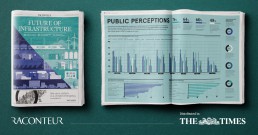
How we can help infrastructure organisations
At Curzon Consulting, we understand it’s about the destination and the journey.
We work with rail, road and utilities organisations to deliver tangible results. Our award winning management consultants help our clients get where they need to be through:
- Digital Monetisation and Transformation
- Data Driven Decision Making
- Operating Model Future Proofing
- Value Enhancing Strategies
Visit our infrastructure page or contact our Infrastructure Lead, Nigel Brannan, to find out more
Download ‘Future of Infrastructure 2020’ report from Raconteur, The Times
CONTACT US TO FIND OUT HOW WE CAN HELP
UK’s Leading Managing Consultants 2020
We have been named as one of the ‘UK’s Leading Management Consultants 2020’ by the Financial Times. We are recommended in four categories:
Sectoral expertise
- Construction & Infrastructure
- Financial Institutions & Services
Consulting services
- Operations & Supply Chain
- Strategy
Managing Partner Andrew Morgan said
We are delighted to be comfortably in the top 40 UK management consultancies alongside some well known brands. This reflects our dedication to delivering results for clients in our chosen markets through strategy, operational and digital transformation.
2019
This is the second year that Curzon Consulting have been recognised in this special report. In 2019 we were recommended or frequently recommended for consulting in strategy, financial institutions, and construction & infrastructure.
Methodology
Compiled with data company Statista, the annual rating is based on recommendations by clients and peers. Statista compiled results based on recommendations. As a result, consulting companies are awarded Bronze (recommended), Silver (frequently recommended) or Gold (very frequently recommended).
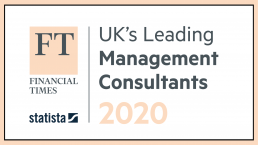
CONTACT US TO FIND OUT HOW WE CAN HELP
Chairman's Masterclass: "Net Zero - the journey so far and options ahead"
Event: Net Zero - the journey so far and the options ahead12 February 2020, London
Event details
Where: Central London
When: 7pm-10pm, 12 February 2020
What: Dinner, Speech from National Grid Executive Director UK, Nicola Shaw CBE
About the speaker
Our guest speaker, Nicola Shaw CBE, will be discussing the journey to net zero carbon emissions
Nicola Shaw was educated at both Oxford University, where she studied for a bachelor’s degree in History and Economics, and the Massachusetts Institute of Technology (MIT), where she received a master’s in Transportation.
Nicola has served in senior management roles, as Chief Executive Officer of HS1 and Managing Director of UK Business Division at FirstGroup plc. She was also an independent Non-executive Director of Ellevio AB and Aer Lingus Group plc.
Nicola’s career, in the UK and overseas, has included senior positions in several regulatory, commercial and operational roles. She has a strong leadership track record, including Chief Executive Officer of HS1 and Managing Director of the UK Business Division at FirstGroup plc.
Who should attend?
The Chairman’s Masterclass Dinner Series is a forum for senior business to discuss topical issues under Chatham House Rules.
Typical attendees include Chief Executive Officers, Chief Financial Officers, Chief Commercial Officers, Chief Strategy and Transformation Officers, Managing Directors and business unit Directors.
Register your interest to attend this event in London, UK.
Please note that spaces are limited.
This is the latest event in our Chairman’s Masterclass Dinner series, providing UK business leaders with insight for over a decade.
Other events
Want to find out more or meet one of our Infrastructure team? Contact us by email, phone or our web form.
Digital transformation across UK infrastructure
Curzon Consulting have partnered with Victoria Trukhanovich to deliver an MBA research project at Cass Business School, on the topic of digital transformation.
Over a series of articles we will explore existing challenges, business requirements, relevant technologies and strategy that needs to be applied by infrastructure organisations in order to design and perform transformative digital change successfully.
In this introductory piece we present a summary of findings on the current state of digital adoption across the infrastructure industry, including the transport, utilities and construction sectors.
Using digital transformation to address challenges
The challenges that companies operating physical infrastructure face include:
-
- aging assets
- frequent incidents of underperformance
- capacity congestion
- inefficient capital and maintenance programmes,
- strong regulations
- dissatisfied customers
Digital transformation is increasingly viewed as an enabler to address these issues, providing opportunities for infrastructure companies to achieve significant gains in areas of system resilience, capacity utilisation, asset productivity, process efficiency and customer engagement.
Lagging digital maturity
Yet, the digital maturity of infrastructure companies lags behind that of many other industries. Although level of maturity varies across and within sectors, the majority of infrastructure companies have not started to implement digital technologies on a wide scale and digital activities are fragmented. Due to a number of legacy factors, infrastructure companies often lack the capacity to build a clear digital vision and drive technological change throughout the organisation.
Empirical evidence from digital transformation projects, conducted by Curzon Consulting with UK transport infrastructure network owners, water and sewerage companies and airport operators, reveals the common challenge of an inconsistent approach to digital integration. Companies often run innovative, technology-enabled initiatives on a project-by-project basis without systematically integrating technologies in line with strategic objectives.
The digital transformation strategy challenge
A dispersed digital agenda was thus found to be the most pressing challenge for companies to solve in order to assert direction within the transformation process and consolidate digital initiatives around achieving clear business objectives.
This study asks how infrastructure companies should go about developing an effective digital transformation strategy. The urgency of addressing this challenge is exacerbated for companies in competitive markets as digital leaders and emerging start-ups are well positioned to identify adjacent niches and secure dominant shares quickly.
The role of technology
To offer a summary of digital strategy recommendations, we seek to:
- assess the potential of critical digital technologies to deliver industry objectives
- identify key capabilities enabled by technological advancements
- examine the evolutionary timeline of digital transformation
- analyse organisational functions affected and value outcomes generated
Developing a framework for successful digital transformation delivery
Once developed and agreed at the corporate level a digital strategy framework can be used by infrastructure companies to evolve from an ‘adapting- enterprise systems’ approach into a smart network operator approach. Although each digital transformation programme will have a degree of uniqueness, the framework developed within this study offers a high-level plan for successful development and delivery of digital change in infrastructure sectors.
Effective transition to the state of being a digital-champion also requires a company to make important early decisions often targeted at legacy factors that would otherwise inhibit change. Those decisions include establishing a strong leadership position, engaging an appropriately skilled workforce, removing silo-based barriers, instituting cultural change in the corporate mindset and addressing ways of working throughout the organisation.
This article marks the first in our Digital Change for Infrastructure series.
This article marks the first in our Digital Change for Infrastructure series.
Sign up to receive future insights to your inbox.
Find out how Curzon Consulting can help your business
CONTACT US TO FIND OUT HOW WE CAN HELP
Evaluating structural entity options for a new arm of government transport body
The issue
- Embryonic consulting business established one year ago by a local government body responsible for transport, to monetise and deploy in-house specialist experience
- Consulting business deeply embedded in one of the organisation’s existing holding companies
- Business had not yet established the appropriate frameworks for managing revenue, project delivery, Intellectual Property and assets
- The client wanted to review the optimal entity structure for its Consulting business in order to better drive commerciality
- Strong desire to set up the Consulting business using an entity structure that fostered commerciality and leveraged in-house resources in the most optimal way
- Clear focus on building a profitable revenue funnel, self-financed growth, better IP and asset monetization, capitalisation on tax benefits, simplified and robust governance and transparent risk management
- Aim to start competing for, or partnering with big organisations to, deliver Advisory, IP and Operations & Maintenance contracts
What we did
- Conducted an exhaustive benchmarking exercise to provide the client with insights into how other service utility organisations have established successful Consulting businesses
- Defined a robust set of design principles and considerations for reference throughout the operating model design exercise
- Identified and shortlisted a set of structural options following a complete option evaluation in terms of feasibility and suitability
- Conducted end-to-end scenario testing, using carefully selected in-flight example bids, across the shortlisted structural options
- Refined the final structural model based on outputs of the scenario testing, for proposing to the client’s Finance Committee.

The results
- A benchmarking report, providing a crystallised view of the comparator landscape, including assessment of comparator suitability, and a summary of key insights and recommendations
- A report outlining the full assessment of entity options against a set of robust criteria and the rationale for down-selection
- A recommended structural model, clearly outlining three distinct entity options catering to the distinct requirements of each activity stream
- A high-level timeline illustrating implementation options and a trajectory of maturity
- A concise, crisp report containing key messaging for the Client to socialise to key stakeholders in order to secure Board approval
An award-winning team






CONTACT US TO FIND OUT HOW WE CAN HELP
Company-wide performance improvement at UK water utility
The issue
- Ineffective incentive structure resulting in organisational silos & sub-optimal performance (in-house and contractors)
- Limited long-term planning and investment as result of weak and inaccurate in-house Asset Knowledge
- Legacy support services from merged smaller companies resulted in fragmented internal processes
- Lack of job prioritisation and adequate planning leading to poor productivity & rework
What we did
- Development and introduction of single performance management framework and incentive system to drive efficiency and customer focused culture
- Implementation of an Asset Capability Centre focused on three capability areas: Physical Asset Management, Stewardship & Delivery; revalidated proposed Capex and ran adaptive approaches on costs
- Implemented regulatory compliant Shared Services with revised governance, improved service levels and cost efficiencies
- Redesign and implementation of new job initiation, planning and scheduling processes

The results
- 20m annualised improvement in Totex
- Annualised Capex avoidance of c£18m throughout the regulatory period
- Annualised Opex reduction of c.£3m
- 25% reduction in shared service cost base
- 20% productivity increase in Field work, 30% increase in RFT and 10% reduction in Customer Complaints
£20m
annualised improvement in Totex
£18m
annualised Capex reduction
c£3m
annualised Opex reduction
25%
reduction in shared service cost base
20%
productivity increase in Field work
10%
reduction in customer complaints
An award-winning team












